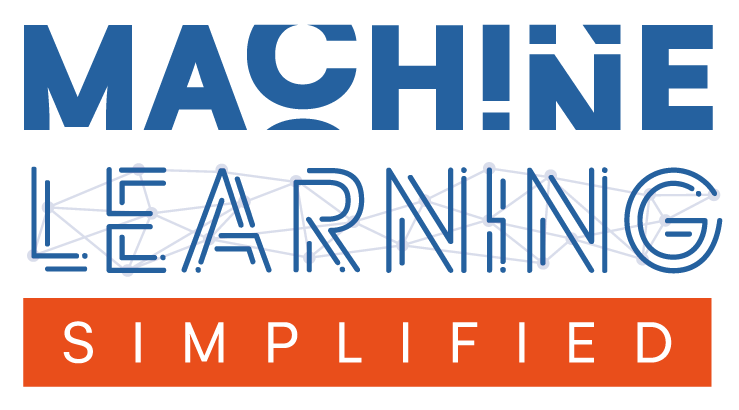Hyper-parameters Tuning#
This is a supplement material for the Machine Learning Simplified book. It sheds light on Python implementations of the topics discussed while all detailed explanations can be found in the book.
I also assume you know Python syntax and how it works. If you don’t, I highly recommend you to take a break and get introduced to the language before going forward with my code.
This material can be downloaded as a Jupyter notebook (Download button in the upper-right corner ->
.ipynb) to reproduce the code and play around with it.
This notebook is a supplement for Chapter 12. Model Tuning and Selection of Machine Learning For Everyone book.
1. Required Libraries#
This block imports all necessary libraries. numpy is used for array manipulations, sklearn provides tools for data mining and data analysis, and skopt is used for Bayesian optimization.
import numpy as np
from sklearn.datasets import make_classification
from sklearn.model_selection import train_test_split, RandomizedSearchCV, GridSearchCV
from sklearn.tree import DecisionTreeClassifier
from sklearn.metrics import accuracy_score
from skopt import BayesSearchCV
from skopt.space import Integer, Categorical, Real
2. Generate Synthetic Data#
Here, we generate a synthetic dataset with 1000 samples and 20 features, split into training and test sets. This dataset will be used to train and evaluate our Decision Tree models.
# Generate a binary classification dataset.
X, y = make_classification(n_samples=1000, n_features=20, random_state=42)
X_train, X_test, y_train, y_test = train_test_split(X, y, test_size=0.2, random_state=42)
3. Hyperparameter Tuning with GridSearchCV#
GridSearchCV exhaustively searches through the defined parameter grid, evaluating model performance for each combination using cross-validation. The best parameters and their corresponding performance are then displayed.
# Define the parameter grid
param_grid = {
'max_depth': [None, 10, 20, 30, 40, 50],
'min_samples_split': [2, 5, 10, 20],
'min_samples_leaf': [1, 2, 4, 6]
}
# Initialize the GridSearchCV object
grid_search = GridSearchCV(estimator=DecisionTreeClassifier(random_state=42), param_grid=param_grid, cv=5, verbose=1, scoring='accuracy')
grid_search.fit(X_train, y_train)
# Best parameters and best score
print("Best parameters found: ", grid_search.best_params_)
print("Best score: ", grid_search.best_score_)
# Evaluate on the test set
y_pred = grid_search.predict(X_test)
print("Accuracy on test set: ", accuracy_score(y_test, y_pred))
Fitting 5 folds for each of 96 candidates, totalling 480 fits
Best parameters found: {'max_depth': None, 'min_samples_leaf': 6, 'min_samples_split': 20}
Best score: 0.89625
Accuracy on test set: 0.865
4. Hyperparameter Tuning with RandomizedSearchCV#
RandomizedSearchCV offers a probabilistic approach, randomly selecting combinations from the parameter distribution. It’s typically faster than GridSearchCV, especially when dealing with a large hyperparameter space or when every incremental improvement is not critical.
# Define the parameter distribution
param_dist = {
'max_depth': [None, 10, 20, 30, 40, 50],
'min_samples_split': np.arange(2, 21),
'min_samples_leaf': np.arange(1, 7)
}
# Initialize the RandomizedSearchCV object
random_search = RandomizedSearchCV(estimator=DecisionTreeClassifier(random_state=42), param_distributions=param_dist, n_iter=100, cv=5, verbose=1, random_state=42, scoring='accuracy')
random_search.fit(X_train, y_train)
# Best parameters and best score
print("Best parameters found: ", random_search.best_params_)
print("Best score: ", random_search.best_score_)
# Evaluate on the test set
y_pred = random_search.predict(X_test)
print("Accuracy on test set: ", accuracy_score(y_test, y_pred))
Fitting 5 folds for each of 100 candidates, totalling 500 fits
Best parameters found: {'min_samples_split': 18, 'min_samples_leaf': 6, 'max_depth': 30}
Best score: 0.89375
Accuracy on test set: 0.87
5. Hyperparameter Tuning with Bayesian Optimization#
BayesSearchCV utilizes Bayesian optimization to search for optimal parameters. This method builds a probability model of the objective function and uses it to select the most promising parameters to evaluate in the true objective function.
# Define the parameter space
param_space = {
'max_depth': Integer(10, 50),
'min_samples_split': Integer(2, 20),
'min_samples_leaf': Integer(1, 6)
}
# Initialize the BayesSearchCV object
bayes_search = BayesSearchCV(estimator=DecisionTreeClassifier(random_state=42), search_spaces=param_space, n_iter=32, cv=5, verbose=1, scoring='accuracy')
bayes_search.fit(X_train, y_train)
# Best parameters and best score
print("Best parameters found: ", bayes_search.best_params_)
print("Best score: ", bayes_search.best_score_)
# Evaluate on the test set
y_pred = bayes_search.predict(X_test)
print("Accuracy on test set: ", accuracy_score(y_test, y_pred))
Fitting 5 folds for each of 1 candidates, totalling 5 fits
Fitting 5 folds for each of 1 candidates, totalling 5 fits
Fitting 5 folds for each of 1 candidates, totalling 5 fits
Fitting 5 folds for each of 1 candidates, totalling 5 fits
Fitting 5 folds for each of 1 candidates, totalling 5 fits
Fitting 5 folds for each of 1 candidates, totalling 5 fits
Fitting 5 folds for each of 1 candidates, totalling 5 fits
Fitting 5 folds for each of 1 candidates, totalling 5 fits
Fitting 5 folds for each of 1 candidates, totalling 5 fits
Fitting 5 folds for each of 1 candidates, totalling 5 fits
Fitting 5 folds for each of 1 candidates, totalling 5 fits
Fitting 5 folds for each of 1 candidates, totalling 5 fits
Fitting 5 folds for each of 1 candidates, totalling 5 fits
Fitting 5 folds for each of 1 candidates, totalling 5 fits
Fitting 5 folds for each of 1 candidates, totalling 5 fits
Fitting 5 folds for each of 1 candidates, totalling 5 fits
Fitting 5 folds for each of 1 candidates, totalling 5 fits
Fitting 5 folds for each of 1 candidates, totalling 5 fits
Fitting 5 folds for each of 1 candidates, totalling 5 fits
Fitting 5 folds for each of 1 candidates, totalling 5 fits
Fitting 5 folds for each of 1 candidates, totalling 5 fits
Fitting 5 folds for each of 1 candidates, totalling 5 fits
Fitting 5 folds for each of 1 candidates, totalling 5 fits
Fitting 5 folds for each of 1 candidates, totalling 5 fits
Fitting 5 folds for each of 1 candidates, totalling 5 fits
Fitting 5 folds for each of 1 candidates, totalling 5 fits
Fitting 5 folds for each of 1 candidates, totalling 5 fits
Fitting 5 folds for each of 1 candidates, totalling 5 fits
Fitting 5 folds for each of 1 candidates, totalling 5 fits
Fitting 5 folds for each of 1 candidates, totalling 5 fits
Fitting 5 folds for each of 1 candidates, totalling 5 fits
Fitting 5 folds for each of 1 candidates, totalling 5 fits
Best parameters found: OrderedDict([('max_depth', 13), ('min_samples_leaf', 6), ('min_samples_split', 20)])
Best score: 0.89625
Accuracy on test set: 0.865
